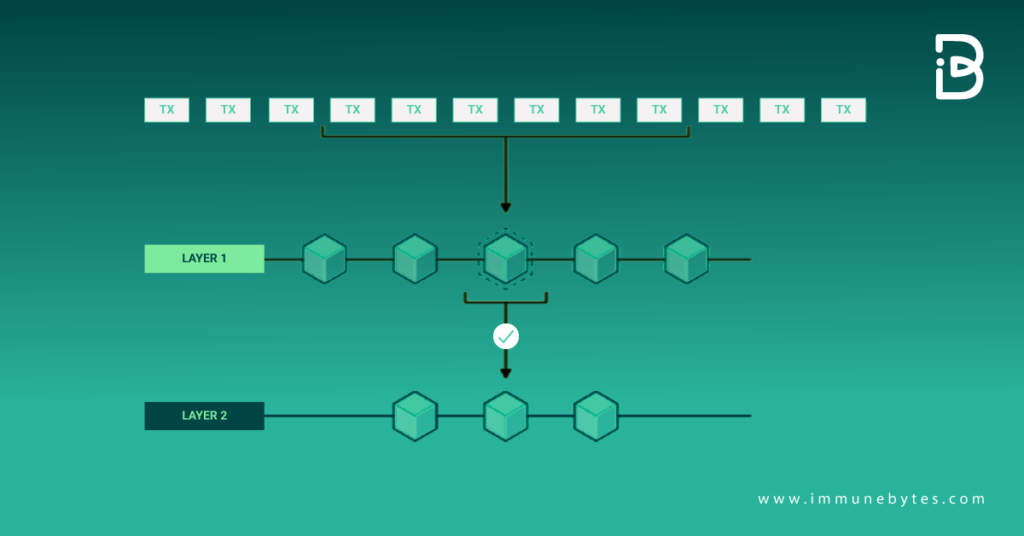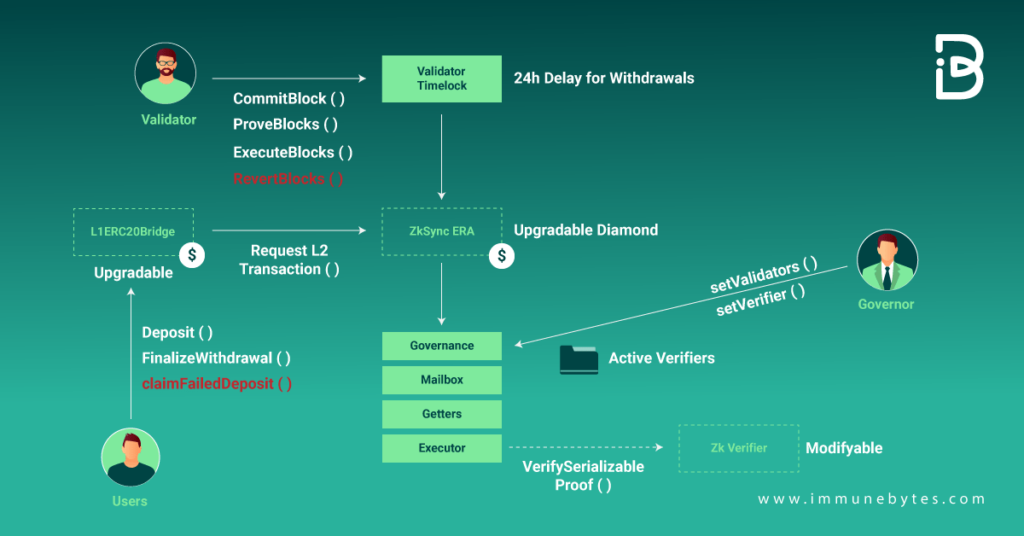Blockchain technology is no less than your favorite series, which keeps developing further, increases the suspense, and keeps the audience intact. However, with every successful development, there have been certain loopholes that have curbed the mass adoption of blockchain technology.
There is no doubt that with the help of blockchain technology, the world witnessed the power of transparency and decentralization, but privacy and scalability are still major concerns that are coming in the journey of mass adoption of blockchain technology.
To resolve the aforementioned concern, zkSync was introduced to provide a groundbreaking solution to blockchain technology’s privacy and scalability limitations. Constructed upon the principles of zero-knowledge proofs, it facilitates data validation without disclosing the underlying information, thereby safeguarding transaction privacy.
In this blog, we’ll deal with various intricacies related to zkSync, its use cases and benefits, zk rollups, optimistic rollups, and a lot more. Stay in touch with us to witness how zkSYnc provides a revolutionary solution to the long-standing privacy and scalability challenges in blockchain technology.
Let’s begin with the basics of understanding what zkSync is and how it acts as a solution to various problems surrounding blockchain technology.
The Basics of zkSync
Table of Contents
zkSync is a layer-2 scaling solution for blockchain technology designed to resolve two major limitations: privacy and scalability. Curated by Matter Labs, zkSync leverages zero-knowledge proofs and zkRollup to enable fast, secure, and cost-effective transactions on the Ethereum blockchain.
With the help of zkRollups (discussed below), zkSync aggregates multiple transactions into a single proof, compressing the data and reducing the computational load on the main blockchain.
This approach notably enhances transaction throughput and the network’s overall scalability. By bundling multiple transactions together, zkSync can process thousands of transactions per second, far surpassing the capacity of the Ethereum mainnet.
zkSync introduces privacy enhancements by utilizing zero-knowledge proofs, specifically zkSNARKs (zero-knowledge succinct non-interactive arguments of knowledge).
Through these cryptographic proofs, users can verify the legitimacy of transactions without revealing the underlying details. With zkSync, transaction data can remain private, protecting user privacy and confidentiality.
Multiple Benefits and Use Cases of zkSync
zkSync offers multiple benefits that provide various use case solutions to the users, some of which are as follows:
- Enhanced Scalability: zkSync enables blockchain applications to scale to a much larger user base by increasing the transaction throughput and cutting down the fees. This further enhances the overall user experience that too in a cost-efficient manner.
- Improved Privacy: All the privacy credits go to the zero-knowledge proofs used in zkSync to protect transaction details, preserve user privacy, and facilitate confidential transactions for sensitive applications, including finance and supply chain.
- DeFi Optimization: zkSync is also a great solution when it comes to improving the efficiency of decentralized finance (DeFi) applications or dApps, by reducing transaction confirmation times and reducing fees, making it an ideal solution for high-frequency trading, lending, and other DeFi activities.
- Gaming and NFTs friendly: zkSync’s scalability and low transaction costs make it suitable for gaming applications and the transfer of non-fungible tokens (NFTs), enhancing the user experience and widening the possibilities within these sectors.
Amidst all these benefits there are other additional benefits offered by zkSYnc, which are as follows:
- Supports “gasless meta-transactions” to provide ease to users who pay gas fees in transferred tokens
- Offers the advantage of smart contract interoperability for the developers to reuse Solidity code
- Enables atomic swaps and limit orders
- Supports native layer 2 NFTs
- It’s an open-source solution
We are done with the theoretical and practical aspects of zkSync; now it’s important for us to tap into the technical aspect of it. So, let’s dive in.
The Working Module of zkSync
As a user looking to make a transaction on zkSync, all they need to do is deposit their assets into a smart contract on the Ethereum mainnet. The zkSync network will then process and verify all the transactions off-chain, clubbing them together into a zkRollup.
This aggregated proof is subsequently submitted to the Ethereum mainnet, providing a concise summary of the multiple transactions. In this manner, zkSync attains high scalability while concurrently leveraging the security and decentralization features inherent in the Ethereum blockchain.
However, the working module is incomplete without mentioning rollups, which is the key component of blockchain scalability. So, let’s see what rollups are and their role in Ethereum scalability.
Everything You Need to Know About Rollups
Rollups were recently introduced in the blockchain arena with the mission to increase the scalability of Ethereum. This is accomplished by executing calculations off-chain, consolidating numerous transactions into a single batch, and subsequently transmitting it to the main Ethereum chain as a unified action.
The rollup operator effectively addresses the challenge of submitting individual transactions separately by consolidating a summary of the necessary changes, encapsulating all transactions within a single batch. Opting for a roll-up entails the necessity of locking all funds within a smart contract on the Layer 1 blockchain.

Following this process, transactions are processed without the burden of the extensive data typically associated with executing a transaction on the main chain, leading to improved efficiency. Using a rollup will significantly decrease the processing time and gas fees of the associated transaction.
At present, there are 2 types of rollups both focusing on Ethereum scaling.
- ZK Rollups
ZK rollups, short for zero-knowledge rollups, validate the correctness of batches of transactions on the Ethereum network. These transactions are considered final once they are verified, similar to any other Ethereum transaction. With the usage of cryptographic validity proofs, commonly known as zero-knowledge proofs, the verification process takes place. The ZK rollup operator produces proof of validity for every batch of off-chain transactions. Upon generating this proof, it is then submitted to the Ethereum blockchain, thereby conclusively finalizing the roll-up batch. In the context of zkSync, this achievement is made possible through the utilization of a SNARK (succinct non-interactive argument of knowledge). Examples of ZK rollups include zksync, loopring, and others. - Optimistic Rollups
Optimistic rollups are a bit different from ZK rollups as they lack a mechanism to directly prove the validity of off-chain transactions. Instead, they operate under the assumption that these transactions are valid unless proven otherwise, hence the term “optimistic.” To address potential malicious activities, optimistic rollups rely on fraud-proof. Should a challenge arise regarding the submitted state on the Ethereum network, the optimistic rollup operator is required to prove the validity of the disputed state and transactions. However, this process can be complex and requires additional oversight through watchers to ensure the honest behavior of the optimistic rollup operator.
Examples of optimistic rollups: Optimism, Arbitrum, etc.
Amidst so many developments there was still a lingering problem that was left unaddressed and that was blockchain adoption. Thus, to resolve the same, the zkSync era came into the limelight.
zkSync Era: A Key to Hyperscalability
The zkSync Era represents a new product within the zkSync ecosystem, aiming to promote the extensive adoption of blockchain technology by enhancing the accessibility and affordability of decentralized applications (dApps) on any scale.

zkSync Era has some phenomenal features that make it all the more attractive for the users who join the same:
1. Cost-efficient computation
zkSync Era leverages an advanced ZK (Zero-Knowledge) technology stack, consisting of a highly efficient LLVM-based Solidity compiler, an acclaimed GPU prover, and the upcoming revolutionary Redshift proof system developed by Matter Labs. The integration of these three robust technologies significantly reduces the cost of an average transaction, bringing it down to a fraction of a penny.
The unlimited computation capacity within each block enables the development of novel decentralized applications (dApps) that can process substantially larger volumes of data on the blockchain than was previously achievable.
By exclusively publishing final storage state updates zkSync Era enables users to exploit the cost-effective computation. This feature has various benefits, such as facilitating more frequent Oracle updates, making transactions involving huge input data more affordable, and significantly reducing the expense of verifying ZK proofs.
2. Low fees storage system
Compared to Layer 1 solutions, zkSync Era significantly reduces expenses by multiple factors. The upcoming EIP-4844 is predicted to further enhance cost efficiency by an order of magnitude.
zkSync Era’s architecture incorporates zkPorter, a decentralized storage option that offers reduced security but substantially lower costs. Distinguishing itself from other storage extensions, zkPorter stands out by supporting synchronous atomic transactions between users and smart contracts on ZK-rollups. This capability enables the implementation of shared liquidity and facilitates a range of unique use cases.
3. Limitless throughput
Just like how a single server or data center cannot handle all of the internet traffic, a monolithic blockchain is insufficient to process all global value transactions. To address this challenge, zkSync Era introduces the concept of Hyperchains.
These independent ZK chains on Ethereum operate as sovereign entities, interconnected through a network of inexpensive and fully trustless Hyperbridges.
Participants have the freedom to deploy their own Hyperchains with customizable consensus mechanisms, validator sets, and data availability policies.
Despite their independence, all Hyperchains inherit the security and finality guarantees from the underlying Layer 1 (L1) blockchain. The throughput of each Hyperchain is contingent on the capacity and decentralization of its nodes. However, the collective power of Hyperchains within the zkSync Era ecosystem effectively removes any limitations on the total achievable throughput.
The Journey of zkSync to zkSync Lite
The journey of zkSync to zkSync Lite has been marked by continuous innovation and optimization in the realm of layer 2 scaling solutions. Initially, zkSync emerged as a powerful ZK-rollup construction, enabling efficient transaction processing and cost reduction on Ethereum.
Building upon this success, the developers of zkSync recognized the need to further enhance scalability and accessibility. This led to the creation of zkSync Lite, a streamlined version that offers even lower gas fees and reduces the barriers to entry for users.
With zkSync Lite, the focus shifted towards optimizing resource usage and simplifying the user experience while still maintaining the robust security guarantees and trustlessness of the original zkSync protocol.
The journey from zkSync to zkSync Lite exemplifies the commitment of the development team to push the boundaries of layer 2 scaling, delivering solutions that make blockchain technology more efficient and accessible to a wider audience.
In Conclusion
zkSync has emerged as a revolutionary solution, addressing the long-standing challenges of privacy and scalability in blockchain technology. By leveraging zero-knowledge proofs and zkRollup, zkSync has paved the way for a more efficient and private blockchain ecosystem.
With its potential to empower DeFi applications and extend to various sectors, zkSync is reshaping the future of decentralized systems. As zkSync continues to evolve and garner wider adoption, with the help of zkSync Era and zkSync Lite, we can look forward to a more scalable, private, and inclusive blockchain era.

